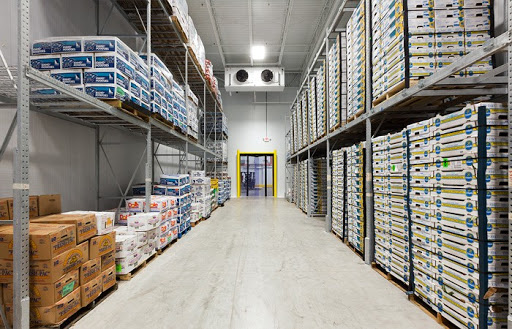Best Practices for Managing a Cold Storage Warehouse

Cold storage is a type of warehouse in which goods; most commonly frozen food, meat, pharmaceutical products and seeds; are store in a temperature-controlled environment. Due to strong growth in online shopping of vegetables, fruits, frozen processed food, meat, seafood and Pharma products, the demand for cold storage warehouses have risen at a rate of 13-15%.
The biggest challenging factor for cold storage warehouses is to maintain the right cold storage temperature for the products inside while also ensuring that the equipment and personnel remain warm enough to perform their job well and at full capacity. Moreover, the low temperature may also hamper the performance of the batteries used in handheld scanning devices used in cold rooms and the performance of the electric forklifts used for moving goods on pallets.
Best Practices for Managing Cold Storage:-
Here are a few commonly followed best practices that help in effective management of cold storage warehouses:
- Conquer temperature ranges :Energy saving is a recurring concern in cold storage warehouses as it is more expensive to cool air than to heat it. Moreover, different kinds of products have different temperature ranges especially in Pharma cold storage. A flexible, low-risk solution for a storage facility with multiple temperature ranges can be to install a modular curtain wall system which can go up and come down and which can be moved from one building to another with changing business needs.
- Automate for savings :With the rapid increase in the cost of labour, land and energy, operators of cold storage warehouses are increasingly on the lookout for automation to control costs. There are a large number of effective automation solutions that can reduce the increasing operational costs drastically. Automation can, in some cases, reduce energy consumption by almost 80%, space requirements by as much as 50% and labour by about 70%.
- Minimize heat loss : High density storage generally tends to create a smaller area to cool products. It also develops an environment that can minimize heat loss. A smaller footprint essentially translates in a smaller roof and since the roof is one of the most vulnerable places for air to escape, it pays to keep the area as small as possible.
- Automate palletizing : Thanks to the advancements in robotics, palletizing is one of the ripest areas in cold storage operations for automation. For years, the manufacturers of frozen products have been facing the challenge of palletizing their products efficiently and in a cost-effective manner. New robotic technology, energy supply, cables, seals and lubricants specifically designed low temperatures enables palletizing to be done inside the cold room without heating shrouds, which leads to elimination of conveyors and manual product handling in low temperatures.
These are a few best practices that can help cold storage warehouse managers to manage the cold storage effectively and efficiently. Are you in need of a cold storage facility as part of the cold chain for your products? With over 30 years of experience and a record capacity of 1.25 crore cubic feet capacity, Gubba is the one of the most sought-after partner for food cold storage, seed cold storage and Pharma cold storage. Moreover, Gubba also has a Germplasm Bank and a Seed Lab which further contribute to the development of the Indian seed industry.


